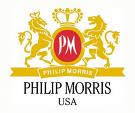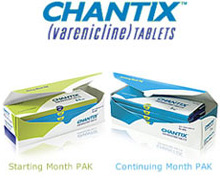November 24, 2007 - State lawmakers increased taxes on cigarettes during the special session, but the pipe tobacco flavored cigars such as Black & Mild slipped though their fingers. (These usually inexpensive cigars are also called "loosies" because they can be sold individually or in packs.) The legislation would have required retailers to sell the cigars in packs of five or more - not individual cigars. Like cigarettes, they would have been taxed $1 per pack of five to 10 cigars and $2 per pack of 11 to 20. But opponents said the legislation unfairly singled out the Black & Mild (B&M) brand. We believe it's unfair to target a single tobacco product brand, to tax it differently than its competitors," said David Sutton, a spokesman for Philip Morris, which owns the B&M brand. Philip Morris recently acquired John Middleton, Inc. the maker of B&M. (In 1968, John Middleton launched the first cigar ever to be made of pipe tobacco. Today, the B&M brand has the best-selling cigar package (the 5's pack) in the U.S. And our other pipe tobacco cigars are all good sellers. These brands are Cherry Blend, Gold & Mild, Prince Albert's Soft & Sweet Vanilla, and Prince Albert's Soft Cherry Vanilla. Each of these brands is available in a five-pack and the 25 upright package.) B&M and other similar products like Swisher Sweets have wide appeal amongst black youth. The Maryland House felt the issue of pipe tobacco flavored cigars would be better dealt with separately, along with the tax on moist snuff. ("Cheap Cigars Escape Taxation Despite Increase On Cigarettes" by Andy Zieminski, Southern Maryland Online, 11/23/2007) Black & Mild is the most popular brand of cigars for smokers 12 and older. Nearly a quarter of 18- to 24-year-old blacks in the Baltimore smoke B&M cigars.
Black & Milds in Baltimore, Baltimore City Health Dept., 10/2007.
Read more...
Bringing the World of Tobacco Control closer together..
Maryland - NO New Taxes on Low-Price Cigars YET.. -
PM USA Invests in R & D..
 November 23, 2007 -Philip Morris USA discusses its new 450,000 square foot Center for Research and Technology. Sensory scientists will work with harm-reduction technicians, and marketing types will interact with engineers to quickly develop potential products that consumers will accept. David Sylvia, director of media affairs for PM USA said the tobacco manufacturer is currently field testing two new flavors of cigarettes, one called Marlboro Smooth and the other called Marlboro Virginia Blend. The latter comes from the “bright” flavor profile of Virginia tobacco. Sylvia said the new flavor lines fall into the company’s core-business category. A “spit-less” pilot of the new Marlboro Snus, a branded product using its tried-and-true moniker, is ongoing in the Dallas-Ft.Worth market, while along the same lines, its Taboka introduction continues testing in Indianapolis. It was also mentioned that another test, this one in Atlanta, that started last month involving a Marlboro-branded, moist-snuff tobacco (MST) product in original and wintergreen flavors. While Snus (pronounced “snoose”) and Taboka fall into a “new product, same consumer” category, he said the MST offer branches off into a “new product, new consumer” scenario. Though Sylvia would not elaborate on any current findings with regards to the ongoing tests, he did say that consumer awareness was a major barrier. “With a new product, people just don’t understand,” he said. “Getting them aware is a big challenge. Awareness and understanding is critical. ”Any testing in place to date will potentially accelerate as the new research center hits capacity."
Read more...
November 23, 2007 -Philip Morris USA discusses its new 450,000 square foot Center for Research and Technology. Sensory scientists will work with harm-reduction technicians, and marketing types will interact with engineers to quickly develop potential products that consumers will accept. David Sylvia, director of media affairs for PM USA said the tobacco manufacturer is currently field testing two new flavors of cigarettes, one called Marlboro Smooth and the other called Marlboro Virginia Blend. The latter comes from the “bright” flavor profile of Virginia tobacco. Sylvia said the new flavor lines fall into the company’s core-business category. A “spit-less” pilot of the new Marlboro Snus, a branded product using its tried-and-true moniker, is ongoing in the Dallas-Ft.Worth market, while along the same lines, its Taboka introduction continues testing in Indianapolis. It was also mentioned that another test, this one in Atlanta, that started last month involving a Marlboro-branded, moist-snuff tobacco (MST) product in original and wintergreen flavors. While Snus (pronounced “snoose”) and Taboka fall into a “new product, same consumer” category, he said the MST offer branches off into a “new product, new consumer” scenario. Though Sylvia would not elaborate on any current findings with regards to the ongoing tests, he did say that consumer awareness was a major barrier. “With a new product, people just don’t understand,” he said. “Getting them aware is a big challenge. Awareness and understanding is critical. ”Any testing in place to date will potentially accelerate as the new research center hits capacity."
Read more...
SNUS Awareness and Education..
 November 22, 2007 - Tobacco companies are in agreement for SNUS to catch on and be a strong seller it's going to require more public awareness and education. Philip Morris USA must feel that one way to accomplish this is to have the retailer play a more active role. In the Philip Morris USA Newsletter - Insights c3m (Consumer Centered Category Management) volume 3, issue 3, November 2007 page 2 identifies how the retailer can play a significant role in the launch of a new product. Click to view text.
November 22, 2007 - Tobacco companies are in agreement for SNUS to catch on and be a strong seller it's going to require more public awareness and education. Philip Morris USA must feel that one way to accomplish this is to have the retailer play a more active role. In the Philip Morris USA Newsletter - Insights c3m (Consumer Centered Category Management) volume 3, issue 3, November 2007 page 2 identifies how the retailer can play a significant role in the launch of a new product. Click to view text.
Read more...
Cigarette pack displays 'tempt quitters'...
 November 22, 2007 - The 1st world study led by Australian researchers found than a third of smokers who were trying to quit or cut down were tempted to buy cigarettes as a direct result of seeing them on display. The study also proves that recent quitter are lured back into the habit by the large glossy pack displays. This temptation may be harder to resist for cigars and smokeless products are stored in displayed on the selling counter while cigarettes are typically stored behind the counter. The investigators urge all jurisdictions to develop legislation to remove tobacco displays from sight in retail stores. The study, published in the international journal Addiction, and led by Professor Melanie Wakefield at The Cancer Council Victoria, Australia. The findings have prompted health groups to call on governments around the world to make removing cigarette pack displays from sight in the retail environment an urgent public health priority. See also the news brief "Link Between C-Stores and Tobacco Use." Click on image to enlarge..
November 22, 2007 - The 1st world study led by Australian researchers found than a third of smokers who were trying to quit or cut down were tempted to buy cigarettes as a direct result of seeing them on display. The study also proves that recent quitter are lured back into the habit by the large glossy pack displays. This temptation may be harder to resist for cigars and smokeless products are stored in displayed on the selling counter while cigarettes are typically stored behind the counter. The investigators urge all jurisdictions to develop legislation to remove tobacco displays from sight in retail stores. The study, published in the international journal Addiction, and led by Professor Melanie Wakefield at The Cancer Council Victoria, Australia. The findings have prompted health groups to call on governments around the world to make removing cigarette pack displays from sight in the retail environment an urgent public health priority. See also the news brief "Link Between C-Stores and Tobacco Use." Click on image to enlarge..
Read more...
Round Snus Can Turns 40..
 November 22, 2007 — Up until 1967, snus had been packed for decades in oval cans and the move to round cans was thought to be so radical that Svenska Tobaks (tobacco operations began in Svenska Tobaks AB, the former Swedish tobacco monopoly, which was founded in 1915) felt obliged to run advertisements with headlines saying, ‘Stay calm guys! We’ve made new snus cans’. When the cans were developed in the middle of the 1960s, the round cans were considered more practical since the snus tended to collect in the corners of the square cans making it difficult to collect the tobacco. Also for manufacturing reasons, the round cans were preferable since production became more efficient. Swedes first started tucking snuff snus, known in Sweden as Swedish snus, under the lip at the end of the 1700s. Portion packaged SNUS (tea-bag like, packets) was launched in 1973. The dominant tradition of snus use in Sweden appears to have prevented the widespread adoption of tobacco combustion (e.g., cigarette smoking). This had a profound and lasting effect on Swedish tobacco use patterns and — in the case of cigarette smoking — related adverse health consequences.
November 22, 2007 — Up until 1967, snus had been packed for decades in oval cans and the move to round cans was thought to be so radical that Svenska Tobaks (tobacco operations began in Svenska Tobaks AB, the former Swedish tobacco monopoly, which was founded in 1915) felt obliged to run advertisements with headlines saying, ‘Stay calm guys! We’ve made new snus cans’. When the cans were developed in the middle of the 1960s, the round cans were considered more practical since the snus tended to collect in the corners of the square cans making it difficult to collect the tobacco. Also for manufacturing reasons, the round cans were preferable since production became more efficient. Swedes first started tucking snuff snus, known in Sweden as Swedish snus, under the lip at the end of the 1700s. Portion packaged SNUS (tea-bag like, packets) was launched in 1973. The dominant tradition of snus use in Sweden appears to have prevented the widespread adoption of tobacco combustion (e.g., cigarette smoking). This had a profound and lasting effect on Swedish tobacco use patterns and — in the case of cigarette smoking — related adverse health consequences.
Reference:
Snus can in round shape is turning 40 years old.
Read more...
Chantix Reports of Suicidal Thoughts and Aggressive and Erratic Behavior..
 November 21, 2007 - CHANTIX™ (also Champix) (varenicline) is non-nicotine prescription medicine specifically developed to help adults quit smoking. CHANTIX contains no nicotine, but it targets the same receptors that nicotine does. CHANTIX is believed to block nicotine from these receptors. Studies show: At the end of 12 weeks of CHANTIX, 44% were able to quit smoking. It also helped reduce the urge to smoke. (From WhyQuit.com: According to boasts by Pfizer, the drug's maker, "approximately one-in-five" users quit smoking for a year.) Posted 11/20/2007 - FDA informed healthcare professionals of reports of suicidal thoughts and aggressive and erratic behavior in patient who have taken Chantix. There are also reports of patients experiencing drowsiness that affected their ability to drive or operate machinery. FDA is currently reviewing these cases, along with other recent reports. A preliminary assessment reveals that many of the cases reflect new-onset of depressed mood, suicidal ideation, and changes in emotion and behavior within days to weeks of initiating Chantix treatment. The role of Chantix in these cases is not clear because smoking cessation, with or without treatment, is associated with nicotine withdrawal symptoms and has also been associated with the exacerbation of underlying psychiatric illness. However, not all patients described in the cases had preexisting psychiatric illness and not all had discontinued smoking. The FDA recommends that healthcare professionals monitor patients taking Chantix for behavior and mood changes. Patients taking this product should report behavior or mood changes to their doctor and use caution when driving or operating machinery until they know how quitting smoking with Chantix may affect them.
Read more...
November 21, 2007 - CHANTIX™ (also Champix) (varenicline) is non-nicotine prescription medicine specifically developed to help adults quit smoking. CHANTIX contains no nicotine, but it targets the same receptors that nicotine does. CHANTIX is believed to block nicotine from these receptors. Studies show: At the end of 12 weeks of CHANTIX, 44% were able to quit smoking. It also helped reduce the urge to smoke. (From WhyQuit.com: According to boasts by Pfizer, the drug's maker, "approximately one-in-five" users quit smoking for a year.) Posted 11/20/2007 - FDA informed healthcare professionals of reports of suicidal thoughts and aggressive and erratic behavior in patient who have taken Chantix. There are also reports of patients experiencing drowsiness that affected their ability to drive or operate machinery. FDA is currently reviewing these cases, along with other recent reports. A preliminary assessment reveals that many of the cases reflect new-onset of depressed mood, suicidal ideation, and changes in emotion and behavior within days to weeks of initiating Chantix treatment. The role of Chantix in these cases is not clear because smoking cessation, with or without treatment, is associated with nicotine withdrawal symptoms and has also been associated with the exacerbation of underlying psychiatric illness. However, not all patients described in the cases had preexisting psychiatric illness and not all had discontinued smoking. The FDA recommends that healthcare professionals monitor patients taking Chantix for behavior and mood changes. Patients taking this product should report behavior or mood changes to their doctor and use caution when driving or operating machinery until they know how quitting smoking with Chantix may affect them.
Read more...
Imperial Tobacco Gets Approval to Sell Brands in U.S..
 November 21, 2007 - Imperial Tobacco Gets Approval to Sell Brands in U.S.. Imperial Tobacco Group Plc, won approval to introduce its European brands (e.g., Davidoff, West, Lambert & Butler - the UK's best selling brand, Richmond, Superkings, Embassy, Regal, Excellence )the U.S., the industry's most profitable market. The Bristol, England-based company said today it joined the Master Settlement Agreement, an accord between cigarette makers that restricts advertising and is a prerequisite to selling tobacco in the U.S. Imperial will start selling brands such as Davidoff in the U.S. within weeks. Imperial this year became the first foreign competitor for Altria Group Inc. and Reynolds American Inc. in their home market in a decade. Imperial already sells cigarettes locally through Commonwealth Brands (4th fourth largest cigarette manufacturer in the United States (e.g., USA Gold, Montclair, Malibu), which it bought in April for $1.9 billion, and will get the biggest U.S. cigar business when it completes the purchase of Spain's Altadis (Alliance Tobacco Distributors) SA next year.(10/18/2007—The European Commission approved Imperial Tobacco Group’s proposed acquisition of Altadis. Imperial Tobacco in September 2005 purchased a 43.5% interest in Swedish company Skruf Snus AB. - Tobacco_Watch.org)
Read more...
November 21, 2007 - Imperial Tobacco Gets Approval to Sell Brands in U.S.. Imperial Tobacco Group Plc, won approval to introduce its European brands (e.g., Davidoff, West, Lambert & Butler - the UK's best selling brand, Richmond, Superkings, Embassy, Regal, Excellence )the U.S., the industry's most profitable market. The Bristol, England-based company said today it joined the Master Settlement Agreement, an accord between cigarette makers that restricts advertising and is a prerequisite to selling tobacco in the U.S. Imperial will start selling brands such as Davidoff in the U.S. within weeks. Imperial this year became the first foreign competitor for Altria Group Inc. and Reynolds American Inc. in their home market in a decade. Imperial already sells cigarettes locally through Commonwealth Brands (4th fourth largest cigarette manufacturer in the United States (e.g., USA Gold, Montclair, Malibu), which it bought in April for $1.9 billion, and will get the biggest U.S. cigar business when it completes the purchase of Spain's Altadis (Alliance Tobacco Distributors) SA next year.(10/18/2007—The European Commission approved Imperial Tobacco Group’s proposed acquisition of Altadis. Imperial Tobacco in September 2005 purchased a 43.5% interest in Swedish company Skruf Snus AB. - Tobacco_Watch.org)
Read more...
Ease of Obtaining Smokeless Tobacco Products - High School Students...
 November 20, 2007 - Source: Philip Morris USA Newsletter - Insights c3m (Consumer Centered Category Management) volume 3, issue 3, November 2007 page 7. While cigarette smoking among children and adolescents has decreased over the past ten years, not all tobacco products are following the trend. According to a recent national survey (the Pride Survey), nearly 8% of high school seniors reported using smokeless tobacco in the past 30 days. This rate has not declined substantially in the past several years. It is also higher in some parts of th e country than in others. Just like with cigarettes, retail access remains one of the primary means by which kids obtain cigars and smokeless tobacco products. The survey found that 34% (see image for news brief)of high school students report that it is "very easy" to obtain smokeless tobacco products. This finding is of concern because numerous studies have found that higher perceived ease of access to other tobacco products correlates to a greater risk of use of these products. While cigarettes are typically stored behind the counter at retail, cigars and smokeless tobacco products are still placed on the front selling counter in many stores. Click on image to enlarge..
November 20, 2007 - Source: Philip Morris USA Newsletter - Insights c3m (Consumer Centered Category Management) volume 3, issue 3, November 2007 page 7. While cigarette smoking among children and adolescents has decreased over the past ten years, not all tobacco products are following the trend. According to a recent national survey (the Pride Survey), nearly 8% of high school seniors reported using smokeless tobacco in the past 30 days. This rate has not declined substantially in the past several years. It is also higher in some parts of th e country than in others. Just like with cigarettes, retail access remains one of the primary means by which kids obtain cigars and smokeless tobacco products. The survey found that 34% (see image for news brief)of high school students report that it is "very easy" to obtain smokeless tobacco products. This finding is of concern because numerous studies have found that higher perceived ease of access to other tobacco products correlates to a greater risk of use of these products. While cigarettes are typically stored behind the counter at retail, cigars and smokeless tobacco products are still placed on the front selling counter in many stores. Click on image to enlarge..
Read more...
Swedish government to increase tax on SNUS again on January 1, 2008
 November 18, 2007 - - Last year on January 1, 2007 the tax on SNUS went up 100%. The tax for 2008 is to go up another 50%.
November 18, 2007 - - Last year on January 1, 2007 the tax on SNUS went up 100%. The tax for 2008 is to go up another 50%.  (Svenska Tandsticks - SM) with a near monopoly on the SNUS market in Sweden accounting for over 90% of sales plans to increase prices and reduce portion sizes. (Some SM brands include General (40%), Ettan (19%), Grov (17%), Göteborgs Rapé (10%) and Catch (8%)). A box of General Portion SNUS (pouches) will cost 34 kronor ($5.34) compared to 30 kronor ($4.72) at present. The lose SNUS version will rise in price from 35 kronor ($5.50) to 43 kronor ($6.76), while the amount in each box will fall from 50 grams to 45 grams. The rise in the tobacco tax at the beginning of 2007 led to a large drop in sales. (Snus prices set to skyrocket, The Local, 11/18/2007) (See related news briefs: October 25, 2007 and September 17, 2007.) As more and more information surfaces on the dangers of SNUS (e.g., increased risk of developing pancreatic cancer - the deadliest cancer of them all, increased risk of fatal cardiovascular disease and stroke, exposure to carcinogens and the oral lesion of hairy tongue) it seems that Sweden is giving up the harm reduction model. ( Sweden giving up harm reduction model?, Eudoxa Science, 12/06/2006)
(Svenska Tandsticks - SM) with a near monopoly on the SNUS market in Sweden accounting for over 90% of sales plans to increase prices and reduce portion sizes. (Some SM brands include General (40%), Ettan (19%), Grov (17%), Göteborgs Rapé (10%) and Catch (8%)). A box of General Portion SNUS (pouches) will cost 34 kronor ($5.34) compared to 30 kronor ($4.72) at present. The lose SNUS version will rise in price from 35 kronor ($5.50) to 43 kronor ($6.76), while the amount in each box will fall from 50 grams to 45 grams. The rise in the tobacco tax at the beginning of 2007 led to a large drop in sales. (Snus prices set to skyrocket, The Local, 11/18/2007) (See related news briefs: October 25, 2007 and September 17, 2007.) As more and more information surfaces on the dangers of SNUS (e.g., increased risk of developing pancreatic cancer - the deadliest cancer of them all, increased risk of fatal cardiovascular disease and stroke, exposure to carcinogens and the oral lesion of hairy tongue) it seems that Sweden is giving up the harm reduction model. ( Sweden giving up harm reduction model?, Eudoxa Science, 12/06/2006)
Read more...


To Provide Public Awareness
Purpose
About Us
Contact Us
2008 HIGHLIGHTS
TOPIX PAPERS - 2008 & 2009..
Archive
-
▼
2007 (248)
-
▼
11/18 - 11/25 (9)
- Maryland - NO New Taxes on Low-Price Cigars YET.. -
- PM USA Invests in R & D..
- SNUS Awareness and Education..
- Cigarette pack displays 'tempt quitters'...
- Round Snus Can Turns 40..
- Chantix Reports of Suicidal Thoughts and Aggressiv...
- Imperial Tobacco Gets Approval to Sell Brands in U...
- Ease of Obtaining Smokeless Tobacco Products - Hig...
- Swedish government to increase tax on SNUS again o...
-
▼
11/18 - 11/25 (9)